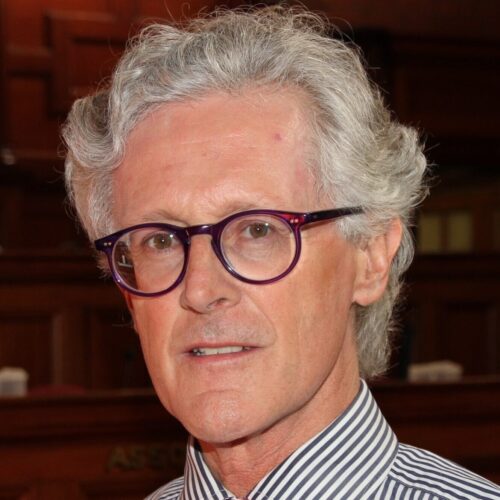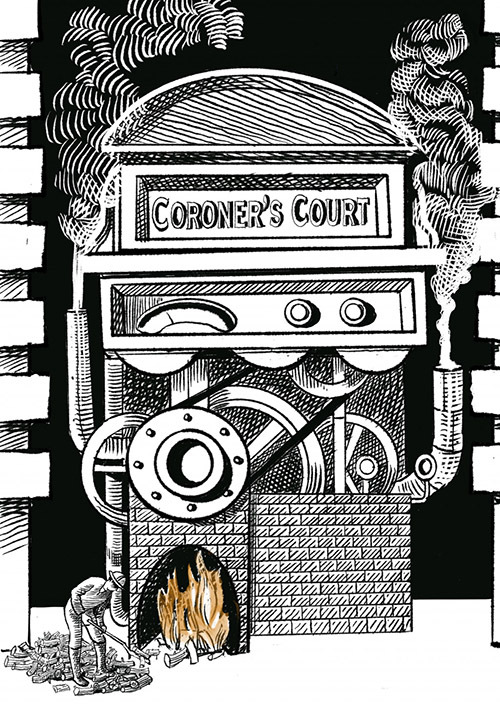- Winter 2022
- Is reform on the way (at last) for the NSW coronial system?

On 29 April 2022, concluding an inquiry lasting nearly a year, a select committee of the NSW parliament delivered its report on the state's coronial jurisdiction. The report is a landmark in the history of the NSW coronial system. It heralds either major reform or, if the report's conclusions and most important recommendations are rejected, a gross failure by the NSW government. The committee made 35 recommendations for a complete overhaul of a system which had been exposed by the inquiry as badly designed, under-resourced and performing poorly.
In the first years of the millennium a wave of reform washed through other jurisdictions such as Queensland, New Zealand, Victoria, Ontario and England & Wales. Parliamentary inquiries, public inquiries and Law Reform Commission reports resulted in law reform and invigorated coronial systems elsewhere. Those portents were ignored in NSW.
In 2008, Victoria established what is probably the best coronial system in the world. It was explicitly focussed on supporting bereaved families and preventing future deaths and injury. Simultaneously, in NSW, the Local Court was seeking to increase the efficiency of its coronial jurisdiction which had fallen into administrative disrepair. That effort resulted in the Coroners Act 2009 (NSW) (Coroners Act) which shifted administrative responsibility for coronial matters in regional courthouses from registrars to magistrates. But little else of substance changed.
In focussing almost exclusively on efficiency, the Local Court and the NSW government of the day failed to grapple with the broader policy questions that had motivated other jurisdictions to reform their systems. Those issues included defining the social purposes of death investigations, improving the treatment of families, developing therapeutic approaches to practice, reorientating the coroners’ role from crime towards public health and safety and, especially in New Zealand, developing culturally competency in relation to Maori family needs and mourning practice.
In 2009, NSW not only lost an opportunity to modernise its system, it took a wrong turn.
The inquiry demonstrated that imposing coronial responsibility upon magistrates who had little knowledge of, experience in, or training for, coronial investigations was a well-meaning but failed experiment which cemented the NSW coronial system into an anachronistic structure resulting in sclerotic performance. Senior coroners had brought this to the attention of the current government. Those views were deflected with the response that a statutory review was underway.

The Coroners Act required a standard statutory review of the Act to be conducted five years from the date of assent. The Act required the outcome of the review to be tabled within a further 12 months. The review was commenced by the Department of Justice (as it then was) in 2014. A report should have been tabled by about June 2015. It still has not been. The statutory review was effectively buried until, in its report, the Select Committee on the Coronial Jurisdiction in New South Wales demanded that it be completed and published. Not only had it been buried, but it had failed from the outset to tackle most of the key problems that undermine the effectiveness of the NSW coronial system. The review was limited by the government and the Local Court to making only minor adjustments to the Act. When major flaws were identified by senior coroners, the review was halted. By ignoring rather than fixing the problems, the government and the Local Court left themselves exposed to criticism if an independent public inquiry were ever to take place. That came to pass at two recent parliamentary inquiries.
In 2020, an international wave of Black Lives Matter protests galvanised the Legislative Council to commence an inquiry into high imprisonment rates of First Nations people. It reported in 2021.2 As part of its reference, that select committee inquired into oversight of Indigenous deaths in custody. The NSW coronial system, for the first time since the Royal Commission into Aboriginal Deaths in Custody (1987–91), found itself exposed to full public scrutiny. So extensive were criticisms of endemic delay, aggravated grief for families, under-resourcing and structural defects in the system that the inquiry concluded ‘it is clear… that the coronial system is in need of root and branch review’. The same select committee immediately reconstituted itself to conduct that review.
The inquiry into the coronial system began in May 2021. Its three main terms of reference were, first, to inquire into the law, practice and operation of the ‘Coroners Court’; second, to compare the NSW system with others and to identify desirable or necessary changes; and, third, to consider ‘the most appropriate institutional arrangements’ for the jurisdiction – in particular, whether a stand-alone Coroners Court (as in Victoria) should be established or whether the Coroners Court should, like the Children’s Court, become an ‘autonomous division’ attached to the Local Court. (Note: unlike most other jurisdictions, there is in fact no statutory Coroners Court in NSW. Magistrates are individual coroners ex officio.)
The committee received submissions from 66 individuals and organisations. It took oral evidence from 38 witnesses including bereaved family members, medical organisation representatives, forensic medicine and coronial administrators, academics (including First Nations researchers), bushfire experts, police and corrections officers, representatives of trade unions, associated law firms and from other legal organisations including the Bar Association, Aboriginal Legal Service, Public Interest Advocacy Centre, Legal Aid and the Australian Lawyers Alliance.
One of the most moving, and probably most important, witnesses was Mrs Leesa Topic, the mother of a young woman shot by police. She told the inquiry:
As this was a sudden, unexpected and unnatural death, our family was thrust into and endured the coronial inquest process, subsequent findings and all that those processes entail. It is a gross understatement to say that this was another harrowing and frightening experience within the horrific journey that we were already living, yet we believed it to be a vitally important component of the process. We wanted the truth, transparency, accuracy and a fully funded investigation. We are here today to put forward our lived experiences of these processes.
Mr and Mrs Topic gave evidence of their frightful experience of losing Courtney, of their bewilderment during the investigation, their sense of helplessness, their feeling of being excluded from rather than included in the investigation, and the aggravation of their trauma by the lengthy delay in the process. An inquest was held into Courtney’s death three years after the fatal shooting. Their evidence provided powerful insights into the experience of families whose lives are abruptly and irrevocably turned inside-out by sudden death. The inquiry report praises those who work within the system. The chair, the Hon Adam Searle MLC, observed that ‘the passion and sense of vocation shared by all was highly visible and admirable’. But, in the committee’s judgment, the system is failing the people of NSW:
… despite everyone’s best efforts, evidence given to this inquiry shows that the court is experiencing very heavy workloads for coroners as well as for forensic and other staff and lacks sufficient resources to undertake the important work before it. This has led to delays in finalising matters, further grief for bereaved persons and families and a significant and growing backlog of cases. There are workforce constraints across the system and the current structure of the court is out of date; it does not recognise and support the specialist nature of the jurisdiction and the unique role it plays in our system of justice.
US research suggests that every sudden death may leave, on average, about 10 shocked and bereaved people struggling to understand and cope.
The report is a fair and well-considered critique of an obsolete and under-powered coronial system. NSW remains the only jurisdiction in Australia which continues the outmoded practice of using regional magistrates as coroners. This is a critical problem – approximately 47 per cent of all reported deaths occur in the regions. Yet regional magistrates have difficulty managing their voluminous workloads in court, let alone managing coronial investigations. They conduct few inquests and rarely make recommendations. They lack the time, resources, training and experience to do so. Such a structure may have been acceptable in the steam age. It is no longer.
Key recommendations made by the select committee include:
• Recognition of the specialist nature of the coronial jurisdiction
• Amendment of the Coroners Act to reflect key functions of modern coronial practice including therapeutic and restorative processes and the prevention of future death
• The establishment of a specialist Coroners Court of NSW, attached to the Local Court (in similar fashion as the Children’s Court) to handle all coronial matters (relieving regional magistrates of coronial responsibilities)
• The appointment of additional coroners and support staff
• The appointment of First Nations people as coroners, commissioners and other identified positions in the Forensic Medicine and Coroners Court Complex
• Cultural competency training for all working in the coronial system and specialist training and professional development for coroners
• The provision of sufficient resources to enable the court to do its work efficiently and effectively, including enhanced support for families and increased funding for the ALS and Legal Aid
• A strengthened and enhanced system of response to coronial recommendations, including parliamentary oversight
• The establishment of an in-house research unit at the Coroners Court modelled on the Victorian Coroners Prevention Unit, focussed on death prevention
• Mandatory inquests for unnatural workplace deaths
• Statutory timeframes and other improvements to the process of referring coronial cases to the DPP
• Extension of the protection against self- incrimination to cover written statements.
The system is a multidisciplinary complex with family support, medical, judicial, legal, police, science and administrative components. It has excellent people. But coroners and their colleagues have the heavy responsibility of supporting families in the worst days of their lives, investigating complex fatal events, ensuring accountability of state organisations and enhancing public health and safety. They need to be equipped for that task. Victoria provides a model for reforming our coronial system. NSW could build upon and improve it.
US research suggests that every sudden death may leave, on average, about 10 shocked and bereaved people struggling to understand and cope.3 The 6500 deaths reported to coroners per annum in NSW may result in about 60,000 sorrowful and bereft people being directly affected by coroners’ and their colleagues’ work. For First Nations communities the multiplier is higher.
That work is not a minor ‘tick-a-box’ activity of the Local Court. For the sakes of the 60,000, the system must be reimagined to deliver support effectively and efficiently to those people, answer their burning questions, ensure accountability of state agencies and agents when necessary, and provide hope that lessons learned from many of those deaths will contribute to saving other lives. This report provides a roadmap to such a system. BN
ENDNOTES
1 NSW Legislative Council Select Committee on the Coronial Jurisdiction in New South Wales report no. 1. https://www. parliament.nsw.gov.au/lcdocs/inquiries/2809/Report%20No.%20 1%20-%20Select%20Committee%20on%20the%20coronial%20 jurisdiction%20in%20New%20South%20Wales.pdf.
2 NSW Legislative Council Select Committee on the High Level of First Nations People in Custody and Oversight and Review of Deaths in Custody report no. 1, 15 April 2021 www.parliament.nsw.gov. au/lcdocs/inquiries/2602/Report%20No%201%20-%20First%20 Nations%20People%20in%20Custody%20and%20Oversight%20 and%20Review%20of%20Deaths%20in%20Custody.pdf.
3 Ashton M Verdery et al., ‘Tracking the reach of COVID-19 kin loses with a bereavement multiplier applied to the United States’, (2020) 117:30 Proceedings of the National Academy of Sciences 17695.

Hugh Dillon
Hugh Dillon was a NSW Deputy State Coroner (2008–16). He is now an adjunct professor at the UNSW Law School, a part-time deputy president of the Mental Health Review Tribunal and a member of Maurice Byers Chambers. He is also a member of the Bar Find A Barrister: https://find-a-barrister.nswbar.asn.au/profile/b10904
